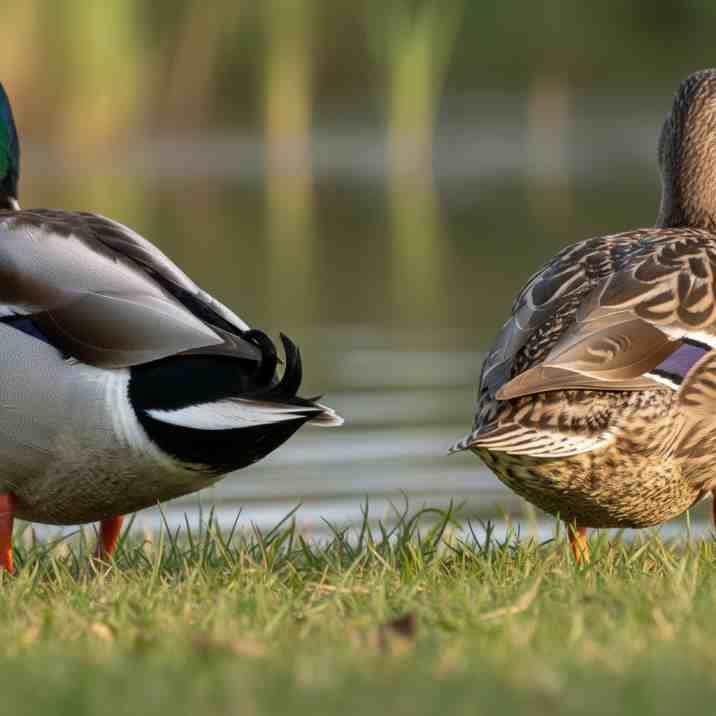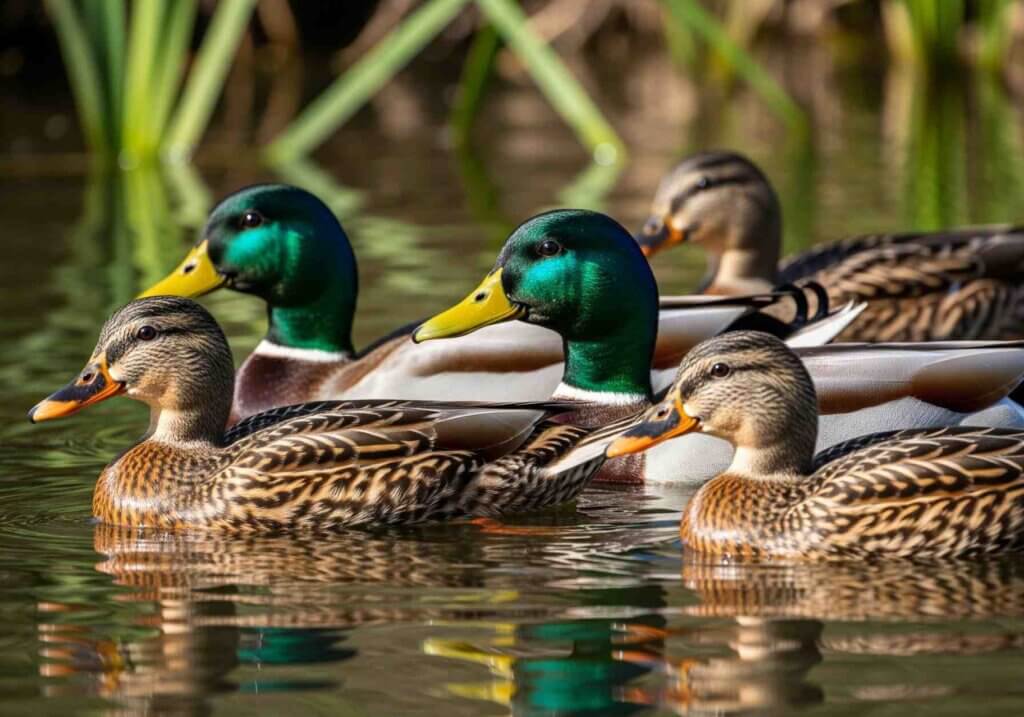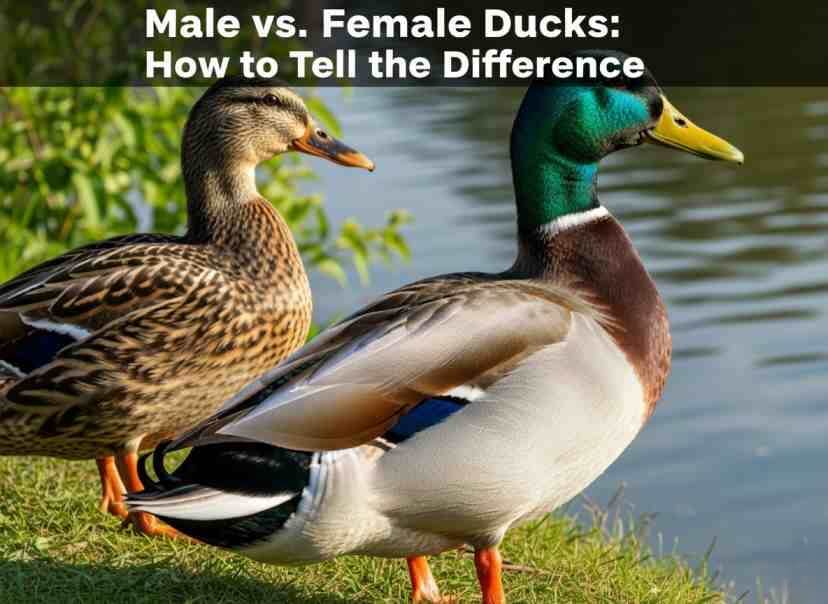Telling a male duck (drake) from a female duck (hen) can be tricky, especially with younger birds. While some breeds exhibit distinct visual differences, others can be more challenging to identify. Fortunately, there are several key indicators you can look for to determine the gender of your flock confidently.
This guide will walk you through the most reliable methods for distinguishing between male and female ducks, from vocalizations to physical characteristics.
The Most Reliable Indicators
For ducks that are at least a few months old, there are three primary characteristics that will give you the most accurate results.
1. The Voice Test
This is one of the most reliable and easiest ways to distinguish between male and female ducks, especially after they are about 3-4 months old.
- Females (Hens): Female ducks are the only ones that produce the classic loud, raspy quack. Their quack is often described as deep, forceful, and unmistakable.
- Males (Drakes): Male ducks do not quack. Instead, they produce a soft, low-pitched, and raspy sound. This sound is often described as a hiss or a low growl, and it is significantly quieter than a hen’s quack.
If you hear a duck quacking loudly, it is a female. If a duck is quiet and only makes a soft, wheezy sound, it’s a male.
2. The Drake Curl

After a male duck’s first molt (usually around 4-6 months of age), a specific feather will grow on its tail, which is a definitive sign of a male.
- Males (Drakes): Drakes will have a small, curled feather at the end of their tail, called a drake curl. This feather curls upward and is a near-perfect indicator of a male duck.
- Females (Hens): Female ducks do not have this feather. Their tail feathers will remain flat and straight.
3. Plumage and Bill Color

For many common duck breeds, a duck’s feathers and bill color can provide a strong clue, especially during mating season.
- Males (Drakes): Male ducks often have bright, colorful, and iridescent feathers to attract a mate. For example, a male Mallard has a brilliant green head. Their bill color may also be different from a female’s.
- Females (Hens): Female ducks typically have more muted, brown, or speckled plumage, which helps them camouflage while sitting on a nest. Their bill color is often different from the male’s.
It is important to note that this method is not always reliable outside of mating season, as some males may lose their vibrant colors during the summer molt.
Less Reliable, but Still Useful Indicators
While the following methods are not always 100% accurate, they can still provide additional clues, especially when combined with the other indicators.
- Size: In most breeds, male ducks are slightly larger and heavier than female ducks.
- Behavior: Male ducks often have more dominant or aggressive behaviors, especially toward other drakes. They may also “head bob” or engage in courtship displays during mating season. Female ducks are generally more submissive and may be observed sitting with their wings slightly splayed, a sign of receptivity.
- Vent Sexing: This is the most accurate method, but also the most invasive and challenging; it requires an experienced person to perform it. It involves physically examining the duck’s cloaca to look for the presence of a male’s reproductive organ.
FAQ’s
Q: At what age can you tell a male and female duck apart?
The most reliable indicators, such as a drake’s curl and a hen’s quack, typically become apparent after the duck is about 3-4 months old. For certain physical features, such as plumage and bill color, you may need to wait until they are 6-9 months old.
Q: Do female ducks quack?
Yes, female ducks are the only ones who can produce the loud, classic quack. Male ducks make a much quieter, raspy sound.
Q: Do male ducks get a curly tail?
Yes, male ducks (drakes) have a single, curled feather at the end of their tail, which is a very reliable way to identify them. Female ducks do not have this feather.
Hello! I’m Ibrahim, the owner and writer of this blog. I run a chicken farm with 160 chickens, and I’ve gained a lot of knowledge about raising and caring for them. Now, I want to share my insights and experiences with you to help you in chicken keeping.

